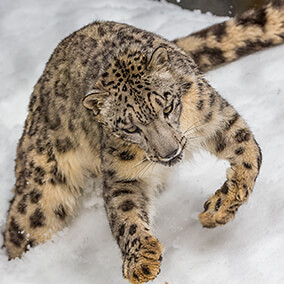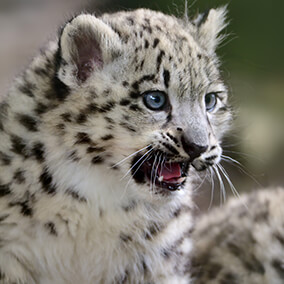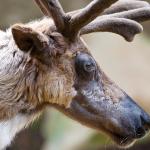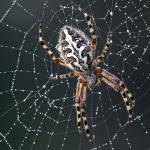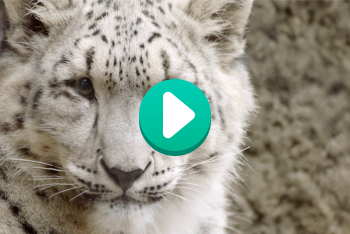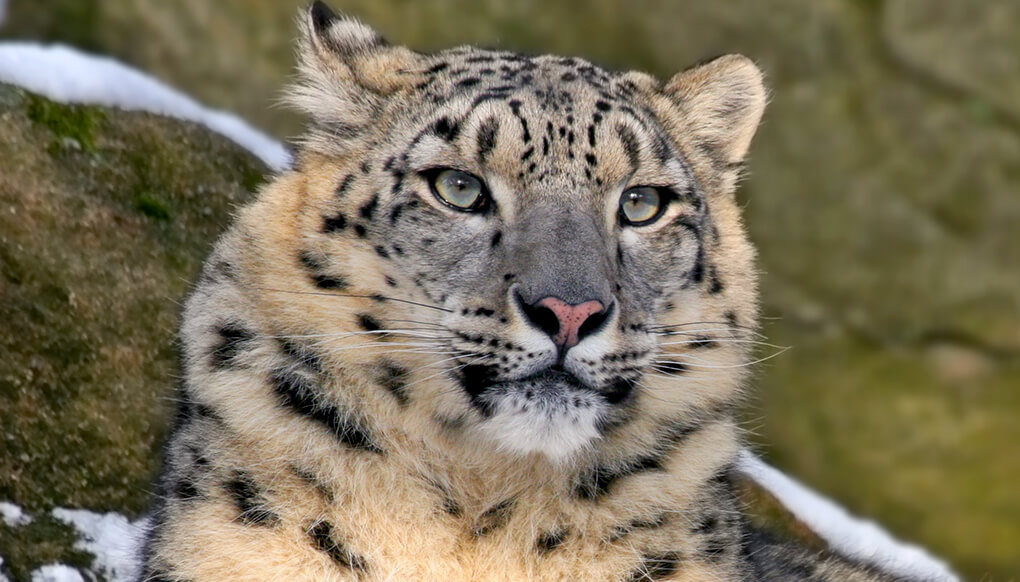
Snow leopard

Mammals


Endangered
facts


Snow leopards hunt large prey like wild sheep and ibex, as well as small animals like marmots and game birds.

These sure-footed cats live on steep rocky slopes and cliffs.
description
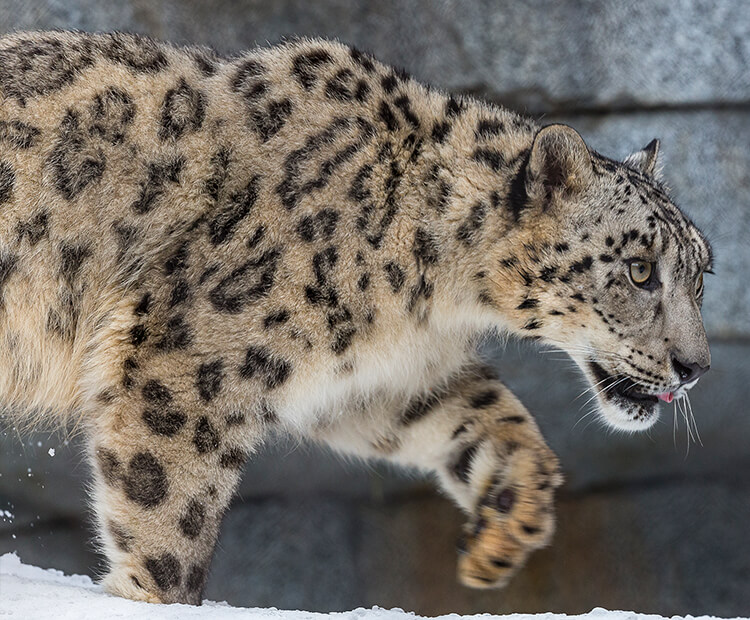
description
Pale and silent hunter
Can you guess why the snow leopard is sometimes called the ghost cat? Other leopards have orange or dark brown fur with black spots, but the snow leopard’s smoky gray color and blurred black markings make it look very different. But this unique coloring helps the cat blend into its stony, mountain habitat.
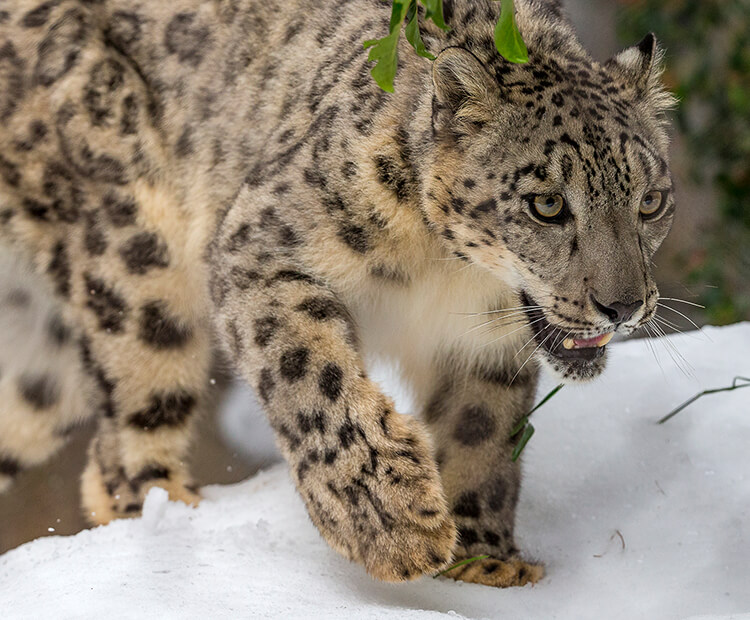
At home in the snow
Snow leopards live at very high elevations where there are steep cliffs. The wild goats and sheep they prey on are quite nimble at leaping from rock to rock—and so are snow leopards! The cat's huge paws have fur on the bottom that gives the leopard traction on the snow and protection from sharp rocks. The snow leopard's long, thick, and luxurious tail acts as a built-in comforter when the cat wraps it around its body for added warmth. That tail is almost as long as its body!
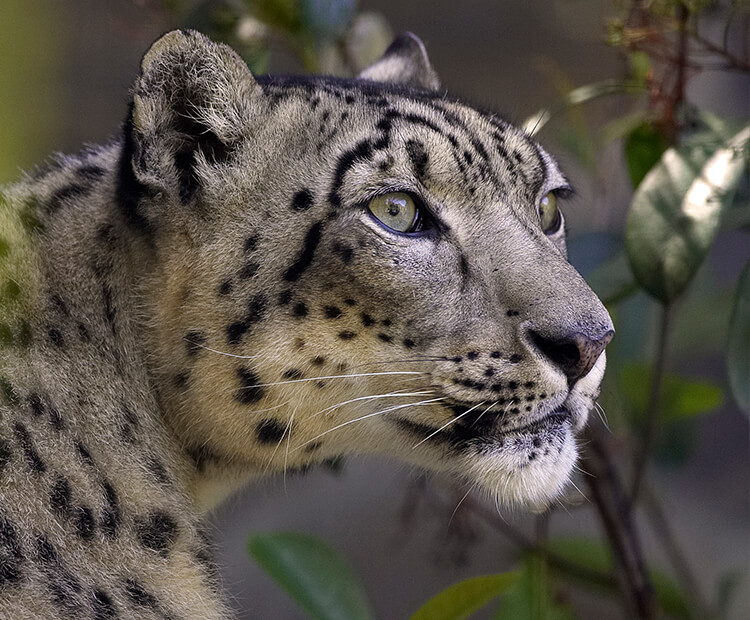
Hello there!
Most of the time, a snow leopard lives by itself. But it leaves special messages for others by making scratch marks on tree trunks and rubbing its scent on boulders. Sometimes a snow leopard will scrape a spot in the ground and leave urine or droppings to advertise it is in the area. These signs that help snow leopards know who's nearby are helpful when males and females look for mates. The only time you'll see snow leopards together is during the breeding season, or when a female is with her cubs.
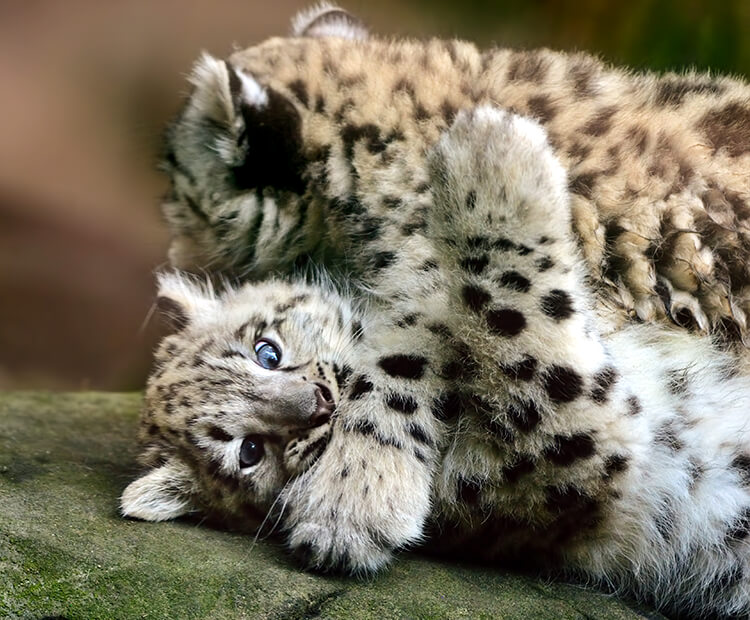
Cubs
In early summer, a pregnant female finds a den in a cozy spot among rocks. Usually, two or three cubs are born in a litter in June or July. The youngsters' eyes open when they are seven days old, and they begin eating meat at around two months old. They begin learning to hunt when they are about three months old, but it takes a long time to learn how to be a predator—cubs stay with their mother for almost two years!
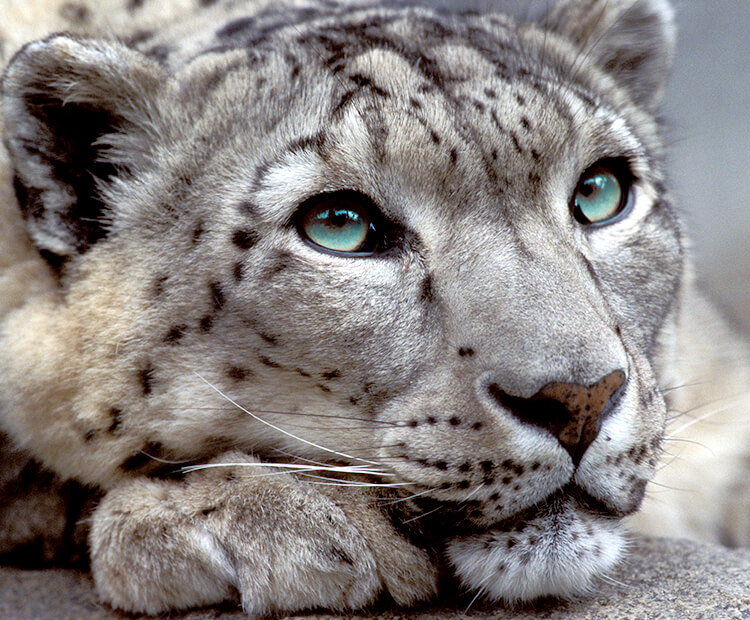
Vanishing "ghosts"?
This cat's beautiful, dense coat helps keep it warm, but it is also one reason the "ghost cat" is disappearing! Snow leopards were long hunted for their fur until their numbers became severely reduced. Today, although many countries have banned the import of snow leopard fur, snow leopards are still hunted and killed illegally. No one is certain how many snow leopards are left in the wild, but biologists trying to save these great cats think there may be only 4,000 to 6,500 in their native home in the snowy mountains of Central Asia.


